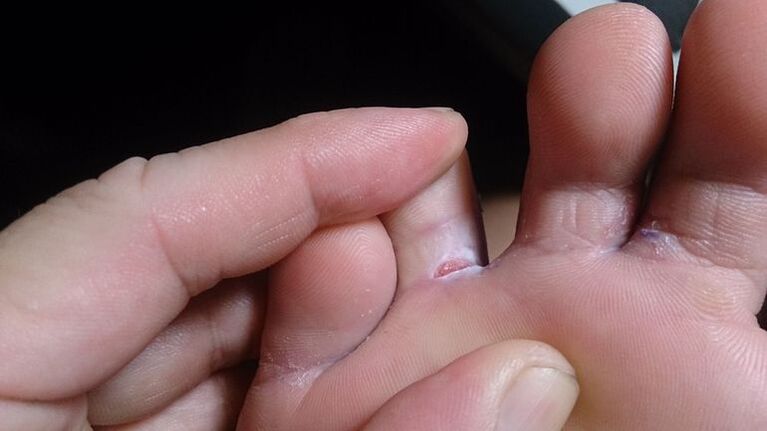
Mycoses are a group of diseases caused by pathogenic fungi.Skin areas that affect these microorganisms are called dermatomycosis.Sometimes they are combined with Onychomycosis - nails disease.Knowing how the fungus looks on the legs, you can cure the disease in a timely manner and avoid complications.There are several options for the course of this pathology.
The mechanism of foot infection
There are factors that directly affect the ability to be infected with a fungus.Moreover, much in this sense depends on the state of immunity.When body defenses are reduced, the likelihood of the development of mycs increases significantly.Immunity can weaken chronic infectious diseases, pathologies of the endocrine system.You can be infected with a fungus directly and indirectly.In the first case, this happens through:
- soil layers;
- several plants;
- Contact with an infected person or animal.
An indirect path involves the use of hygiene and other things the patient actively uses.
Candida mushrooms live on the surface of the epidermis.When the composition of the separate sweat glands changes, a nutrient medium is formed for the development of microorganisms.Candida group representatives acquire pathogenic properties.This means that they can easily cause disease.
Mycosis Classification

With epidermophytosis, the skin and nails are affected.You can be infected with this disease in public places: in gyms, saunas.Through which objects the pathogen is most often transmitted:
- towels;
- cloths;
- oil cloths;
- Rugs.
Men in adulthood suffer from epidermofitia more often.A favorable factor for disease development is an increase in perspiration.
Trichophytosis can be caused by several types of fungi from a group of trichophons.The disease is considered very contagious.It is transmitted through shoes that an infected subject uses, washcloths, towels and other bath accessories.More often, pathology is found in children.Approximately 17% is the prevalence in adolescents.Young men often suffer.Among adult men, the incidence is even higher.At risk are employees of workshops, baths, showers, athletes, miners.
Parade candidiasis, compared to epidermory, is less common.Most of the fungi of the Candida genus belongs to the conditionally pathogenic group.This means that these microorganisms are present in the human epidermis in the norm.They gain pathogenic properties after a decrease in immunity.
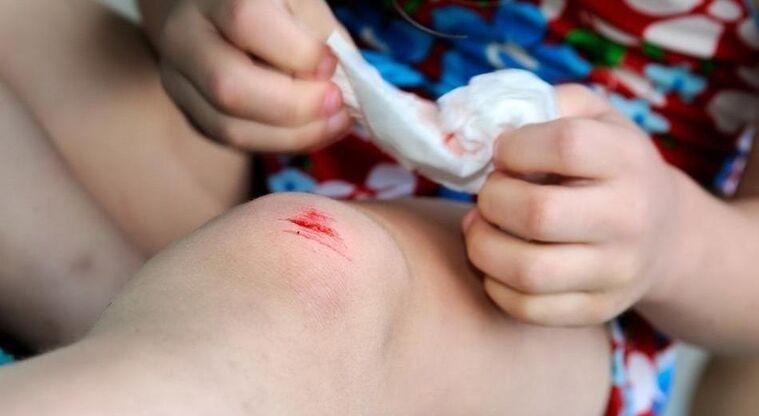
For the Candida mushrooms to enter the body, just use objects belonging to the patient.These microorganisms are often present in food products such as meat, milk and dairy products.The risk of infection increases in the presence of such factors:
- Skin lesions due to exposure to chemical components, alkalis and acids;
- maceration, skin sweat;
- The presence of fungus in the air in large quantities.
Symptoms of the disease
By the nature of the course, rubramicosis and epidermophytosis are similar.For this reason, experts combine them in a category - Mikoza Stop.It is distinguished by scaly, dyshydrotic and intertrigeneous of its forms.A separate group is Onychomicosis, which can be:
- atrophic;
- Normotrophic;
- hypertrophic.
With dihydrotic ringworm, the work of the sweat glands is inhibited.The fungus on the fingers with an intertrigonic form looks like a rash of the diaper.Despite such a division, it often needs to be considered conditional, since various variations of the disease are combined.
Scaled and dyshydrostic
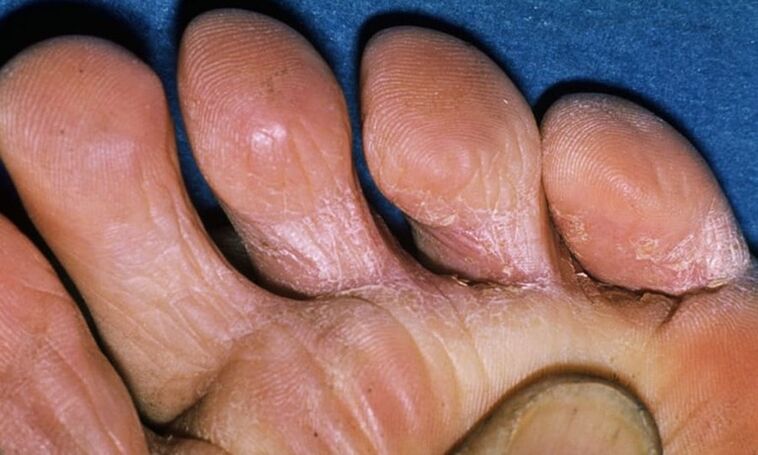
At first, the scaly shape of the fungus affects one side.Then it changes to the opposite.The areas of redness are formed on the skin, which gradually begin to peel.Individual patients complain about itching.The area of damage can be large and small, depending on the patient's body.There are people who suffer from this form of mycosis from their feet, but nothing bothers them.
The fungus on the skin of the legs with a Dishydrotic shape seems particularly: the bubbles form with a diameter of 2 to 8 mm in large quantities form in the bow of the foot.Little by little, they begin to merge into larger formations and then explode.In its place, ulcerative skin lesions are formed.Sometimes the process changes to the internal and external lateral surface.The bubbles are open and instead you can see areas of diaper with erosion.
The fungus on the legs also manifests in itching and pain.Erosion is in the dry future and healing, and peeling is formed in its place.The fungal infection can be complicated by bacteria.In this case, the liquid located inside the bubbles is cloudy.The skin on the feet swells, hearts.A Dishydrotic form is characterized by a long flow.The periods of remission alternate with exacerbations.Generally, the fungus with this form affects only one foot.
Intriginal form
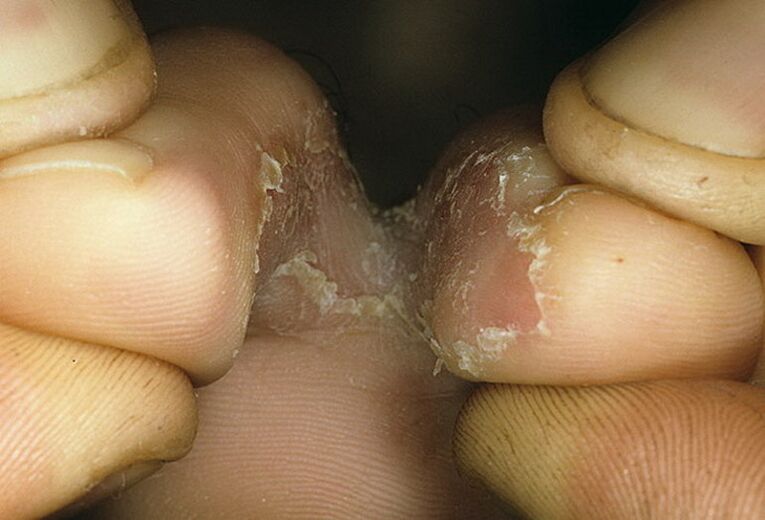
It became more widespread and emerges independently.Less commonly, this form develops at the bottom of the squamous ringworm.The process affects the area between the 4th and 5th fingers of the foot.The main symptom is the appearance of cracks in a epidermis with a whitish edge.The surface layers of the skin are exfoliated.Between the fingers, weakening is formed.The patient complains of burning and itching.In areas of injury, quite painful to the touch of the form of erosion.
The intriginal form is chronic in most cases, has a long flow.The condition improves the cold season and exacerbates in the summer.In patients with this form, the skin is loosened over time.Their protection functions are reduced.This creates a favorable basis for streptococcal infection.In the epidermis, abscesses are formed, surrounded by sections of swelling and redness.
Types of onychomycosis
This disease leads to damage to the nails on the fingers.The pathogen first attacks the free edges of the plaque.Here, stripes and spots of a yellow tone are formed.Various forms of onychomycosis are distinguished:
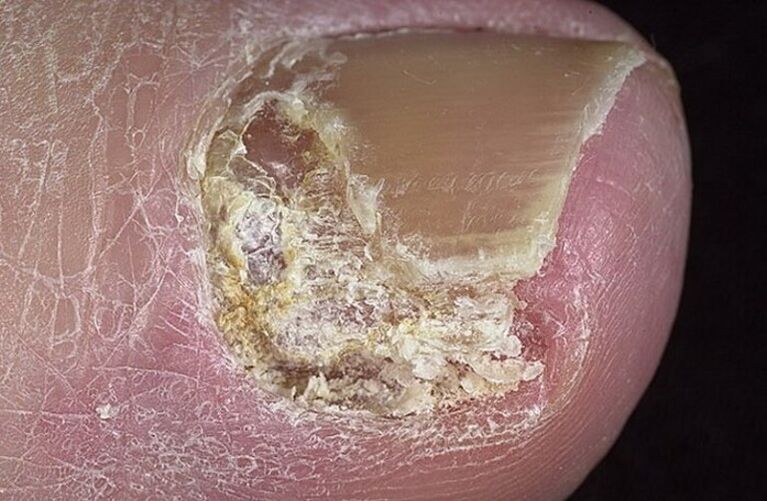
- Hypertrophic.The nail turns yellow, its thickness increases.It collapses, and the skin under it peels and thickens.
- Atrophic.The opposite situation is observed here, when the nail is thin and is destroyed.The skin under it is covered with a keratinized layer.
- Caused by molds.It is formed in the bottom of other types of nail diseases.The dish can be green, yellow, brown and sometimes even black.Paronichia is formed in the Periologist space - purulent inflammation.
In 70% of cases, onychomycosis affects 3, 4 and 5 fingers in the legs.In 30% of cases, 1 and 4 fingers suffer.Often, a normotrophic form of the disease is found when yellow spots are present in the nail, but its integrity is not violated.
Fungus treatment
There are several treatment schemes for the disease that are selected individually by a doctor.
Additional treatment methods include intake of immunostimulants and vitamins.They help strengthen immunity.If a bacterial infection has entered, antibiotics are prescribed.Sometimes the occurrence of a fungal infection is favored by the underlying disease.It must be treated first.We are talking about dermatological pathologies and chronic infections.Anti -histamines are recommended in the presence of an allergic component.
Traditional medicine
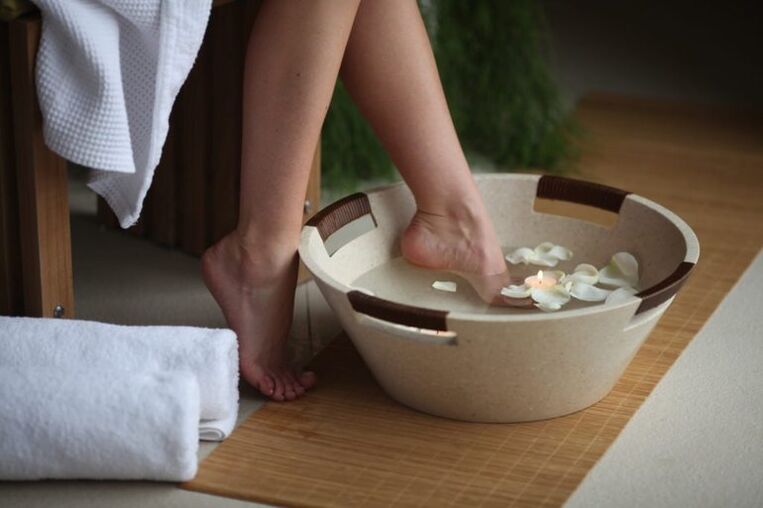
Mycoses do not pose a significant danger to health.But their presence helps to reduce immunity, acts as a focus of inflammation.Only antifungal therapy using specialized medications helps you get rid of this problem.In the early stages, the use of folkloric recipes is allowed, which are complemented by basic therapy.Which methods can be practiced:
- Bath reception;
- Processing of affected areas with medicinal herbs decoctions;
- Application of ointment.
For baths, you can take wine vinegar as it has an antiseptic effect.First, you need to wash your legs with warm water and dry them.Then wine vinegar is poured into the water in a ratio of 1 to 2 and the legs are lowered into it.They hold them there for 5 minutes, after which they put on socks for the night and go to bed.
Another version of the bath involves the use of soda and salt.Take a tablespoon of ingredients and dissolve into the water.After that, lower your legs into the solution, keep no more than 15 minutes.At the end of the procedure, the legs are washed with warm water.
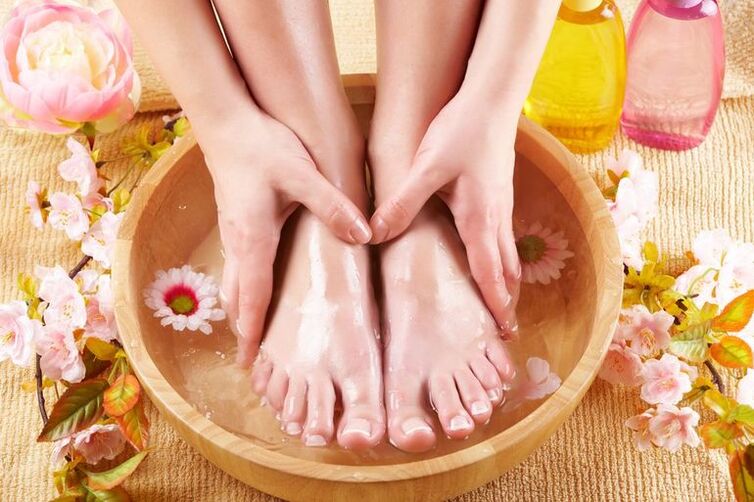
To treat legs with therapeutic decoctions, the verbenic medicine and the inflorescences of the calendula can be used.In addition, oak bark, dry blackberry fruits have a good anti -saptic effect.The selected components are mixed in the same quantity.3 tablespoons.l.And pour a glass of water.Put a small fire for 15 minutes.Filter and moisten the injury of decoction with the resulting decoction.Also, this tool can be used for lotions.
To prepare a healing ointment, they mix the same amount of pork fat and sifted wood ash.The resulting ointment must be thick and have a homogeneous consistency.It is applied to clean and dry your legs twice a day: in the morning and at night.



























